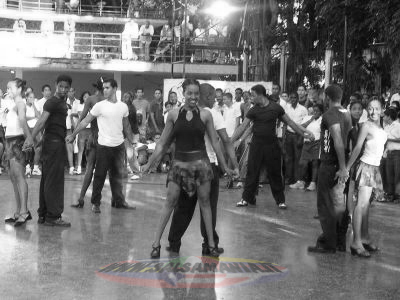12.3 Boom of Cuban Salsa

The premieres of the 1990s in Havana, Cuba, within the realm of Cuban music, began to produce the so-called Cuban Salsa Boom.
This phenomenon resulted in the creation of countless Cuban popular dance music groups. Not only did groups composed entirely of men emerge, but female orchestras were also founded, comprised of young women graduates of the country’s music conservatories, such as Sexto Sentido and Caribe Girls. But Las Anacaonas were the first to champion this trend, having invited young musicians to join their orchestra since the 1980s.
Furthermore, spectacular vocal idols and instrumentalists emerged, capturing the public’s attention. Hence, during this period, the Guinness World Record for “The Longest Son in the World” was organized in 1998. This event featured one hundred groups and thousands of musicians from across the country, playing nonstop for one hundred hours, five consecutive days. For this reason, Havana began to be classified and known not only as the Cuban capital, but as the world capital of salsa and as a musical city.
José Luis Cortés brought about the Cuban salsa boom, revolutionizing music in the 1990s with the creation of a new form of music, the famed Timba, a major event in the history of Cuban music.
Three factors can be identified as contributing to and leading to this boom: the number of music schools that already existed at this time and, consequently, the number of students graduating from them; the recognition of the salsa music genre by musicians; and the importance of Cuban dance music abroad.
This phenomenon in Cuban music brought greater development and expansion to the music industry and marks an important stage in its history.








